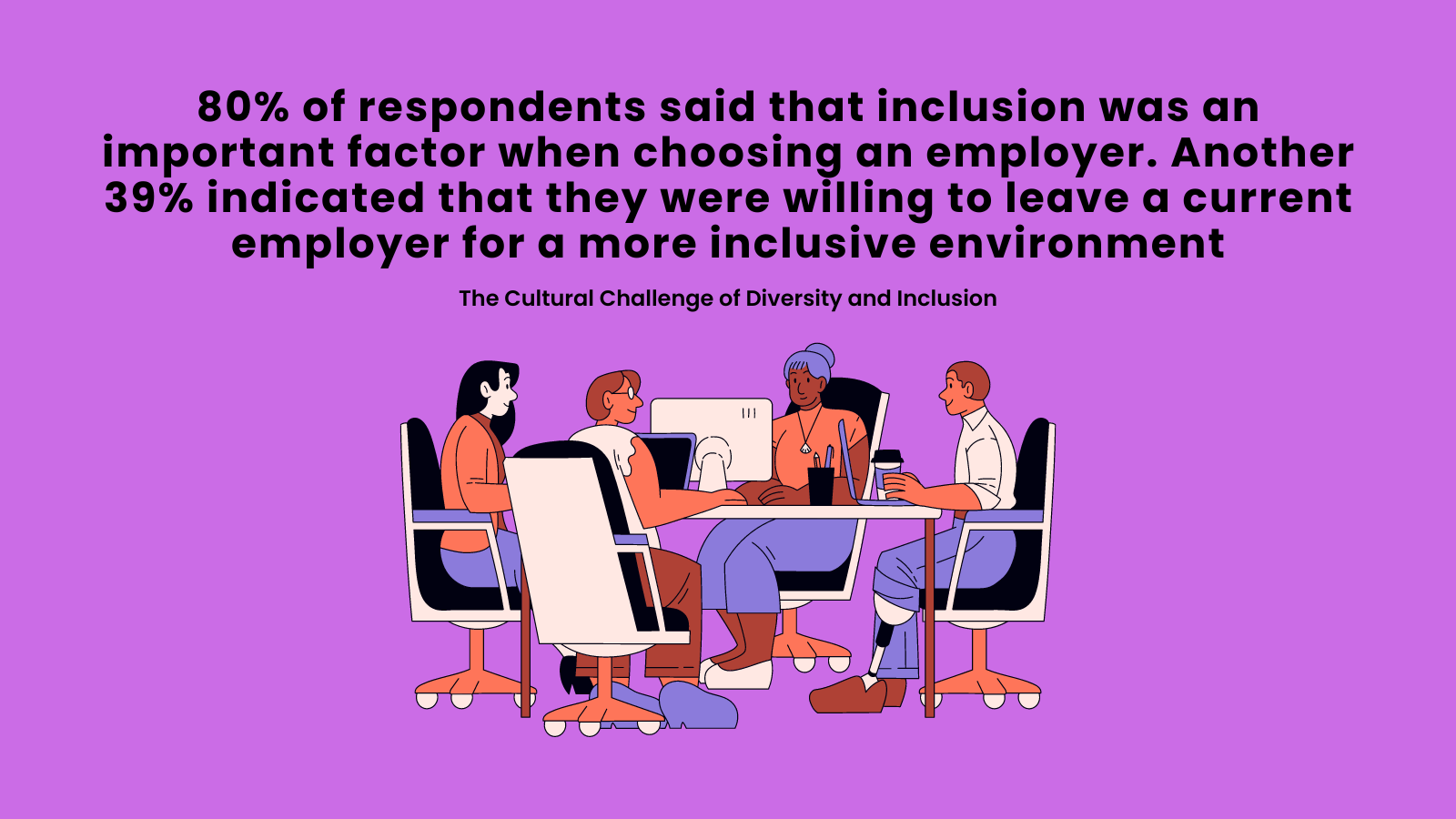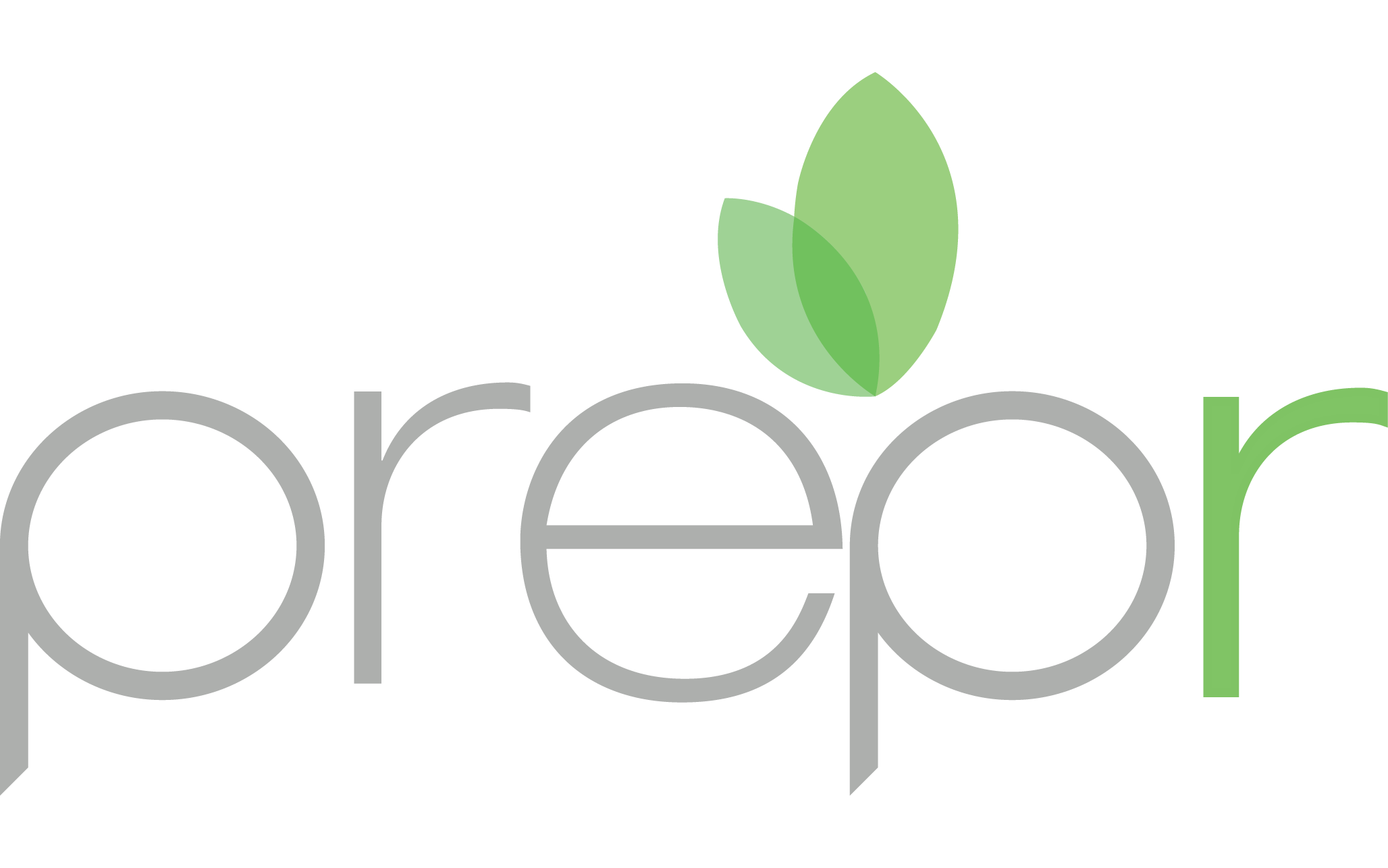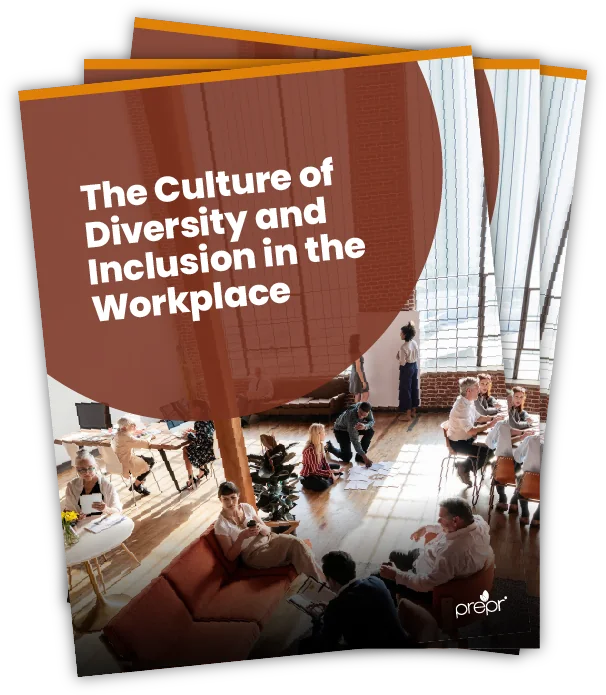
27 Apr The Cultural Challenge of Diversity and Inclusion
The environment and culture of the workplace have a major impact on the diversity of an organization. Diversity without inclusion means very little and often cannot reach its full potential.
The inclusivity of a work environment has become a key deciding factor for many employees in choosing where to work and whether or not they’ll stay.

In a 2017 survey conducted by Deloitte, 80% of respondents said that inclusion was an important factor when choosing an employer. Another 39% indicated that they were willing to leave a current employer for a more inclusive environment.
The culture of a workplace is therefore a determining factor in the success of an organization’s diversity initiatives and of their ability to grow.

In a work culture where there are expectations of long work hours, little scheduling flexibility, and a lack of diverse role models there is little room for inclusion.
This is evident in industries with low levels of representation. According to a study conducted in 2015 by Women in Manufacturing, two-thirds of the manufacturing workforce indicated that their workplace did not have any active recruitment programs tailored for female applicants.
In the same study, only one-third of respondents felt their employer was good at training, and developing the talent of female employees. Women in these roles don’t feel supported in their ongoing career development.

The technology industry likewise has lower levels of representation. There is a significant loss of diverse talent at the mid-career level in the tech industry. In particular, women seem to leave the industry around this time.
This can easily be attributed to unsupportive working environments and less than inclusive workplace cultures. While women frequently experience competing priorities at this point in their careers, a work culture that cannot support additional life priorities is one that does not support diversity.

Diversity is one of an organization’s greatest strengths; according to ongoing research from Catalyst, organizations with inclusive work practices are shown to be twice as likely to meet or exceed their targets.
This same research suggests that these same organizations are six times more likely to innovate and an additional eight times more likely to improve their business outcomes.
It is not surprising then, that an inclusive workplace is 35% more likely to outperform its competitors.
By creating a more inclusive work culture, organizations in the manufacturing and technology sectors would be able to boost their diversity – providing the groundwork for better competition, stronger innovation, and more creative problem solving.

This environment for innovation is an environment that is not only diverse in its make-up, but has a culture that supports that diversity and allows it to thrive.
An inclusive culture not only attracts a more diverse employee base, it is also better able to retain it. Workers will not choose to stay or actively participate in a work environment where they feel unwelcome, unnecessarily stressed, or unrepresented.
Creating a work culture where every employee feels valued and is given a sense of belonging is a critical step in increasing the diversity and inclusion of a workplace.
Want to build a better team culture?
Learn how your team can identify and address issues of diversity, equity and inclusion. Our 31-page eBook gives the facts you need to get started.

